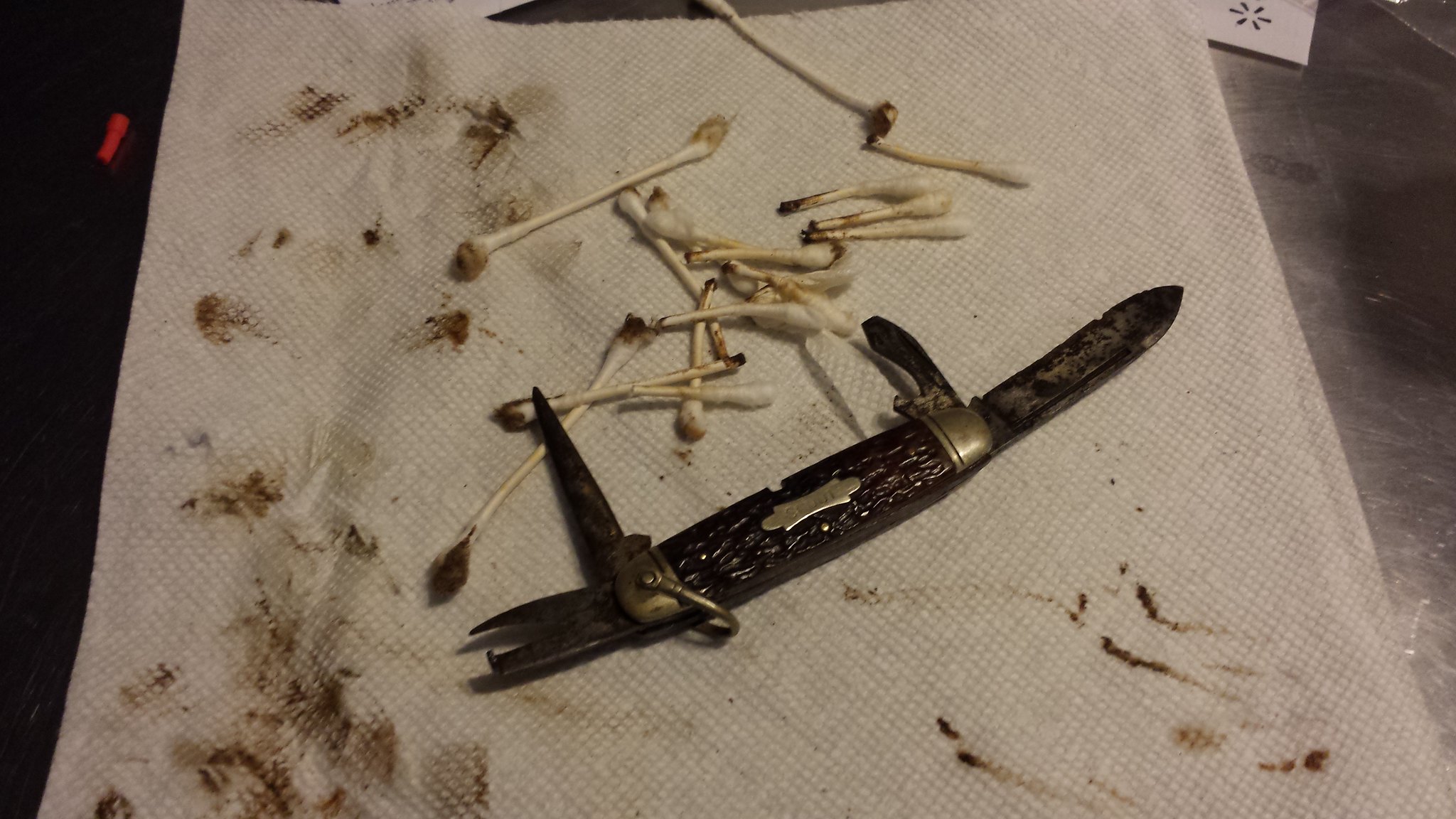WD-40 is a workable rust-remover, especially combined with steel wool. Douse the steel parts thoroughly (don't worry about the bone). Leave it overnight, come back and scrub with more steel wool. Repeat until you sense you've gotten all off you can.
Don't be afraid to scrape at the WD-40-soaked rusty parts. I have an old & pitted (but sharp) TL-29 from Klein Tools that I use for this task. Again, keep working at it until your reach the point of no continuing improvement.
Wipe off the gunk and WD-40, then wash the whole thing in hot water & dish soap, rinse thoroughly, dry thoroughly: use Q-tips and paper towel worked into the crevices with wood coffee stirrers (Starbucks, McDs) or popsicle sticks. Canned air also works. Drive away all the water.
Then oil. I don't recommend 3-in-1 unless that's all you can get. A gun lubricant like Break Free or Quick Release works better.
Carry and USE the knife, oiling probably once a day for a week or so. Then once a week for a month. By then, if you've been carrying and using (or opening) all the blades, it should be pretty smooth.
IMPORTANT CAUTION: Never pose the blades as your image shows, with all the blades partway open. I know people like to do this for display you'll see it all the time. But it's playing with fire, as the maneuver puts high stress on the backsprings, which can be decades old and weakened with rust.
Knives vary greatly in their vulnerability to this, but many a Camillus "demo" knife, for example, has a busted backspring thanks to somebody trying it.
If you want to display the blades open, it's safest to do it this way
Open one blade fully, then half-open the blade on the other end of the
same spring.
Now fully open one blade on the
other spring, followed by half-opening the other blade on that same spring.
To close them, close the half-open blades first, then those that were fully opened.
The principle is never having both blades on the same spring half-open at the same time. See Black Mamba's Scout knife:
http://www.bladeforums.com/forums/s...ity-Knives-Scout-Knives?p=9207196#post9207196







